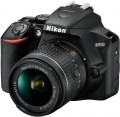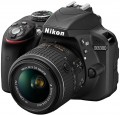DxOMark rating
The result shown by the camera in the DxOMark ranking.
DxOMark is one of the most popular and respected resources for expert camera testing. According to the test results, the camera receives a certain number of points; The more points, the higher the final score.
Total MP
The total number of individual light sensitive dots (pixels) provided in the camera's sensor. Denoted in megapixels - millions of pixels.
The total number of MPs, as a rule, is greater than the number of megapixels from which the frame is directly built (for more details, see "Effective number of MPs"). This is due to the presence of service areas on the matrix. In general, this parameter is more of a reference than practically significant: a larger total number of MPs with the same size and effective resolution means a slightly smaller size of each pixel, and, accordingly, an increased likelihood of noise (especially at high ISO values).
Light sensitivity (ISO)
The sensitivity range of a digital camera matrix. In digital photography, light sensitivity is expressed in the same ISO units as in film photography; however, unlike film, the light sensitivity of the sensor in a digital camera can be changed, which gives you more options for adjusting shooting parameters. High maximum light sensitivity is important if you have to use a lens with a low aperture (see Aperture), as well as when shooting dimly lit scenes and fast-moving objects; in the latter case, high ISO allows you to use low shutter speeds, which minimizes image blur. However, note that with an increase in the value of the applied ISO, the level of noise in the resulting images also increases.
No AA filter
No AA filter in camera design.
The AA filter is responsible for "anti-aliasing" — the elimination of the moiré effect. This effect can occur when shooting objects with a lot of thin horizontal or near-horizontal lines (for example, a brick wall at a great distance, or a suit made of a certain type of fabric). It leads to the appearance of a characteristic pattern in the picture, which, usually, is inappropriate; to eliminate this phenomenon, an AA filter is provided. At the same time, this feature is said to reduce the overall sharpness of the image; therefore, it may not be available in some cameras. These are mainly professional models: the absence of an AA filter gives the photographer additional features, but puts forward increased requirements for shooting skills.
Frames per series (JPEG)
The highest number of shots a camera can capture “in one go” in JPEG continuous shooting.
The technical features of modern digital cameras are such that during continuous shooting, photos have to be recorded in a special buffer, and only then, after the end of the series, they can be copied to a memory card. This buffer has a limited size, so the number of frames in one series is also limited. At the same time, we note that this indicator is usually indicated for shooting at the highest possible resolution (see "Maximum image size"); at lower resolutions, the volume of each image is reduced, and the number of frames in the series may turn out to be more than stated in the specifications.
JPEG, the most popular digital photography format today, is smaller and requires less processing power than RAW (see "Recording in RAW Format"). Therefore, in a JPEG series, as a rule, more frames are available to the photographer. However, in some models that have two separate buffers (for RAW and JPEG), it may be the other way around.
Frames per series (RAW)
The highest number of shots the camera can capture “in one shot” when shooting in RAW format continuously (see “Recording in RAW Format”).
The technical features of modern digital cameras are such that during continuous shooting, photos have to be recorded in a special buffer, and only then, after the end of the series, they can be transferred to a memory card. This buffer has a limited size, so the number of frames in one series is also limited. At the same time, we note that this indicator is usually indicated for shooting at the highest possible resolution (see "Maximum image size"); at lower resolutions, the volume of each image is reduced, and the number of frames in the series may be more than stated in the specifications.
RAW images take up more space and require more processing power than "finished" JPEGs. Therefore, the number of frames in a series of this format is usually lower than that of JPEG. However, there are exceptions — usually these are cameras that have two separate buffers (for RAW and JPEG).
Frames per series (JPEG RAW)
The highest number of frames a camera can capture “in one go” in continuous shooting mode, where the same frame is saved in both JPEG and RAW format at the same time (see “Recording in RAW Format”).
The technical features of modern digital cameras are such that during continuous shooting, photos have to be recorded in a special buffer, and only then, after the end of the series, they can be copied to a memory card. This buffer has a limited size, so the number of frames in one series is also limited. At the same time, we note that this indicator is usually indicated for shooting at the highest possible resolution (see "Maximum image size"); at lower resolutions, the volume of each image is reduced, and the number of frames in the series may turn out to be more than stated in the specifications.
Shooting JPEG and RAW at the same time requires a lot of resources, and the materials themselves take up a lot of space. Therefore, the possibility of such shooting itself is available mainly in premium cameras, and the number of frames in a JPEG RAW series is usually less (at best, the same) than in any of these formats separately.
HDR
Camera support for
HDR.
HDR stands for High Dynamic Range. The main application of this technology is shooting scenes with significant differences in illumination, when there are both very bright and very dark areas in the frame. The features of modern digital photography are such that in the normal shooting mode, only a rather narrow range of brightness can be correctly processed; as a result, with a large difference in illumination, the image contains either too dark or overexposed fragments. HDR avoids this phenomenon: in this mode, the camera takes several shots with different exposure settings, and then glues them together in such a way as to reduce the brightness in bright places and increase in dark places. This allows you to shoot, for example, landscapes against the backdrop of a bright sunset sky, the interiors of dimly lit buildings with bright windows, etc. In addition, HDR can also be used as an artistic technique — to give the picture an unusual colour scheme.
Note that this effect can also be achieved using post-processing in a graphics editor; however, using the camera is much more convenient.
Manual video focus
The ability to
manually focus the camera during video shooting.
This feature is typically found on cameras that support manual focus in photo mode (see "Manual Focus"); however, not all such models are capable of focus manually when shooting video, so this feature is highlighted separately. As in the case of photography, manual focus allows the user to independently choose the object to be focused on, without relying on automation (which quite often does not work the way we would like). This can be useful not only to ensure the overall quality of the material, but also to use original creative techniques.

